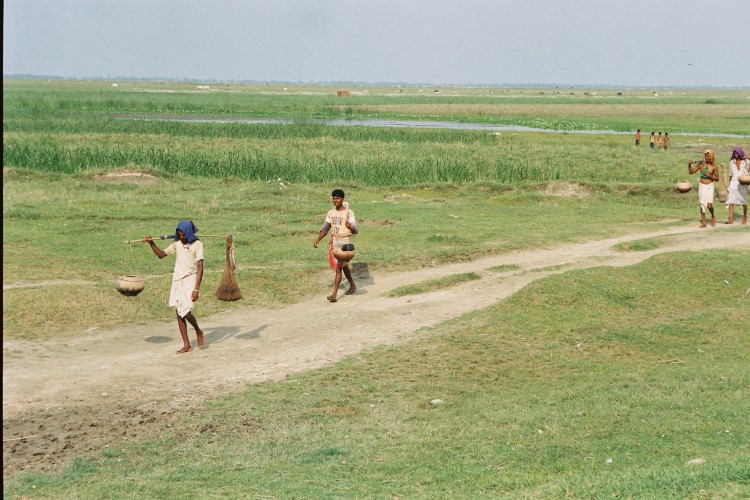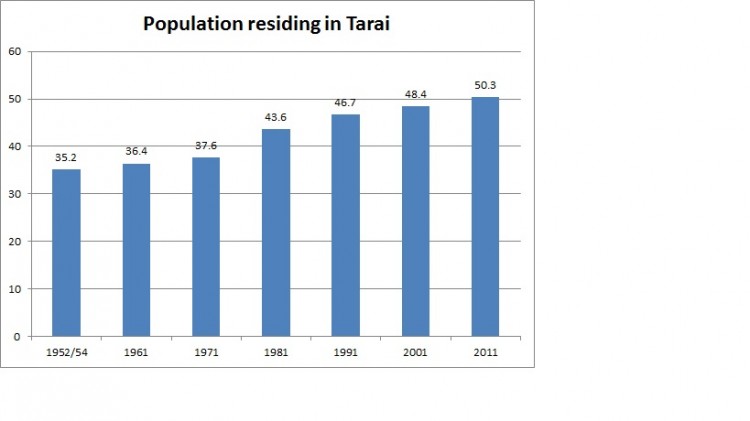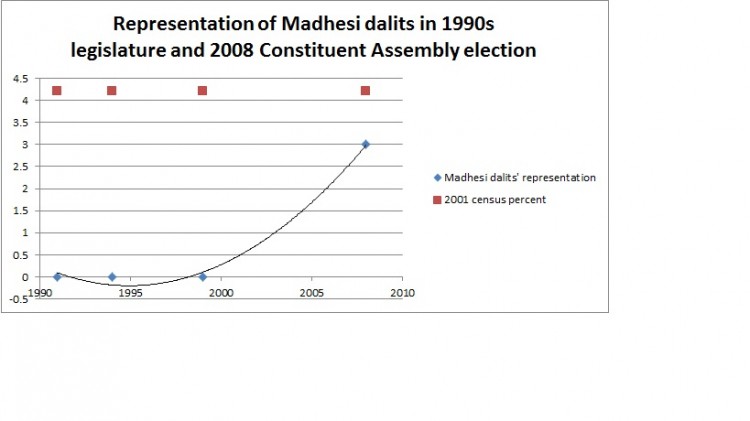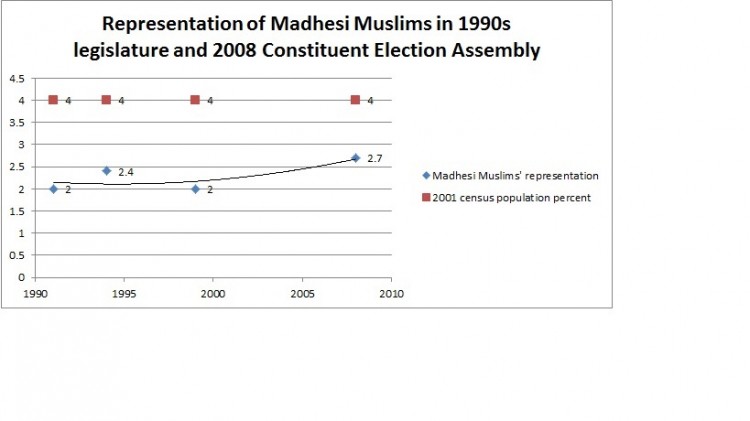Madhes: Facts and rumors
Sujit Mainali / October 2, 2015
Lately, the news media and social networking sites are abuzz with some interesting statements on Tarai-Madhes. Southasiacheck.org has examined whether these statements are fact-based or not.
First statement: More than half of the total population of Nepal lives in Tarai-Madhes.
According to the 2011 census, Nepal’s total population is 26,494,504 and out of this, 50.26 percent (13,318,705) lives in the Tarai.
So, this statement is fact.
Second Statement: People of hill origin also live in the Tarai.
The 2001 census showed that people of hill origin comprise over 35 percent*** of Tarai population. (Source: Pitambar Sharma, Unravelling the Mosaic, Special Aspects of Ethnicity in Nepal, Social Science Baha/Himal Books, 2007, Kathmandu)
Similarly, the 2011 census showed that about 34 percent** of the people living in Tarai-Madesh are of hill origin. (Source: Kare Vollan, Elections in Nepal, Identifying the Political Excluded Groups, pg 54-58, Social Science Baha/Himal Books, 2014, Kathmandu)
So, the second statement is also a fact.
Third Statement: Parliamentary representation of Tharu, Madhesi and others from Tarai (barring people of hill origin residing in the Tarai) is not proportional compared to their population.
The 2001 census showed that Tarai population barring people of hill origin was 32.39 percent of the national population. But their representation in parliament formed in 1999 was only 20.5 percent.
But this does not mean that all social groups of Tarai were not proportionately represented in parliament. According to census 2001 data, people of Madhesi caste groups comprised 15 percent of the national population and their representation in parliament formed in 1999 was 14.1 percent. Madhesi Dalits comprised 4.29 percent of the national population, but their representation in parliament was nil.
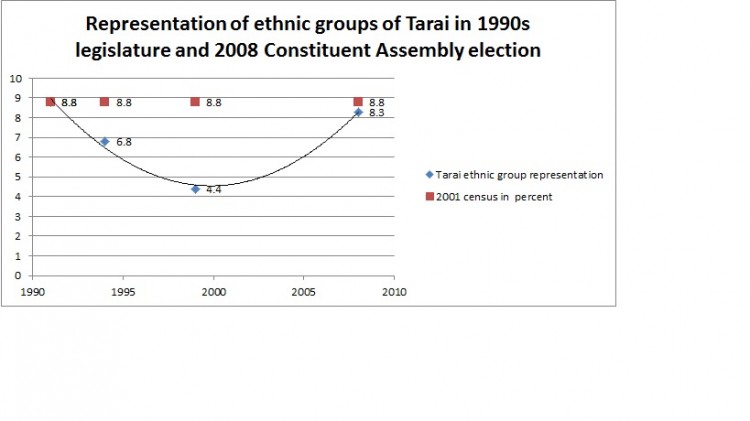 Likewise, representation in the Lower House of Muslims and indigenous communities of Tarai including Tharus was almost half of their population size. Representation of these communities was encouraging in the first Constituent Assembly (CA) that was formed after the April 2006 popular movement. Thirty-four percent of the total 601 CA members were from these communities although these communities comprised just 32.3 percent of the national population. But in the same Constituent Assembly, representation of Madhesi Dalits and Muslims was still almost half of their population size. But the parliamentary representation of the Madhes Caste groups, which comprised 15 percent of the national population, was 20.3 percent.*
Likewise, representation in the Lower House of Muslims and indigenous communities of Tarai including Tharus was almost half of their population size. Representation of these communities was encouraging in the first Constituent Assembly (CA) that was formed after the April 2006 popular movement. Thirty-four percent of the total 601 CA members were from these communities although these communities comprised just 32.3 percent of the national population. But in the same Constituent Assembly, representation of Madhesi Dalits and Muslims was still almost half of their population size. But the parliamentary representation of the Madhes Caste groups, which comprised 15 percent of the national population, was 20.3 percent.*
(Source: Kare Vollan, Elections in Nepal, Identifying the Political Excluded Groups, Social Science Baha/Himal Books, 2014, Kathmandu)
Therefore,
- In the House of Representatives formed in 1991 and 1994, Madhesi caste groups were under-represented. But, these caste groups were proportionately represented in the House of Representatives formed in 1999. Likewise, Madhesi caste groups were over-represented (compared to their share in national population) in the first Constituent Assembly formed in 2008.
- Madhesi indigenous groups have been sometimes proportionately represented and on some occasions underrepresented in the legislature.
- Legislative representation of Madhesi Dalits and Muslims between 1991 and 2008 was not proportional. In the House of Representatives formed after three parliamentary elections between 1991 and 1999, representation of Tarai Dalits was nil.
(Note: There is slight difference in the size of population of the communities living in Tarai in the books by Kare Vollan and Pitambar Sharma.)
Fourth statement: The proportion of Madhesi caste groups, Madhesi Dalit, Muslims and indigenous communities in the national population is gradually rising.
Censuses conducted before 1991 would not maintain community-based record of the size of population. But censuses conducted since 1991 show the proportion of Madhesi caste groups, religious groups (Muslims) and Tarai indigenous communities in national population rising gradually.
In 1991, these Tarai communities comprised 26.5 percent of the total population, and this proportion rose to 32.2 percent according to 2011 census.
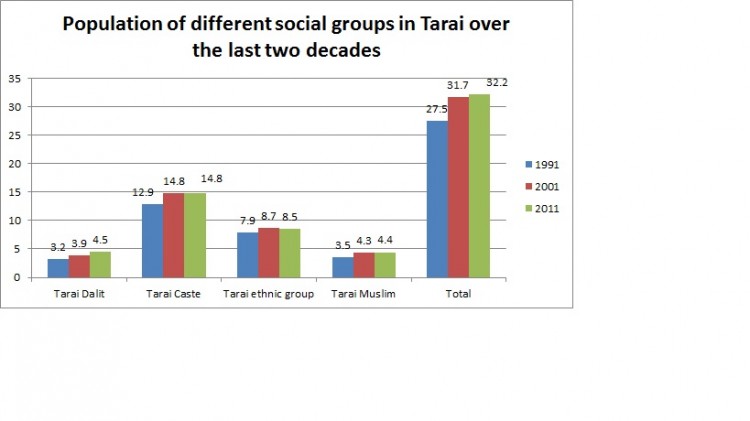 (Source: Pitambar Sharma, Some Aspects of Nepal’s Social Demography: Census 2011 Update, Social Science Baha/Himal Books, 2014, Kathmandu)
(Source: Pitambar Sharma, Some Aspects of Nepal’s Social Demography: Census 2011 Update, Social Science Baha/Himal Books, 2014, Kathmandu)
Thus, this statement is correct.
*The sentence has been corrected for error.
**Earlier this figure was wrongly mentioned as “about 17 percent”.
*** Earlier this figure was wrongly mentioned as 16.7 percent due to calculations error.
This material is copyrighted but may be used for any purpose by giving due credit to southasiacheck.org.
Comments
Latest Stories
- In Public Interest Covid-19 cases are low, but that’s not an excuse to avoid vaccination
- In Public Interest What is BF.7, the sub-variant that has the world by its grip?
- In Public Interest Threat of a new Covid-19 wave looms large amid vaccine shortage in Nepal
- In Public Interest As cases decline, Covid-19 test centres in Kathmandu are desolate lot
- In Public Interest Dengue test fee disparity has patients wondering if they’re being cheated
- In Public Interest As dengue rages on, confusion galore about what it is and what its symptoms are. Here’s what you need to know
In Public Interest
 Covid-19 cases are low, but that’s not an excuse to avoid vaccination
The Pfizer-BioNTech bivalent vaccines authorised by the Nepal Government provide better protection a...
Read More
Covid-19 cases are low, but that’s not an excuse to avoid vaccination
The Pfizer-BioNTech bivalent vaccines authorised by the Nepal Government provide better protection a...
Read More
- What is BF.7, the sub-variant that has the world by its grip?
- Threat of a new Covid-19 wave looms large amid vaccine shortage in Nepal
- As cases decline, Covid-19 test centres in Kathmandu are desolate lot
- Dengue test fee disparity has patients wondering if they’re being cheated
- As dengue rages on, confusion galore about what it is and what its symptoms are. Here’s what you need to know
